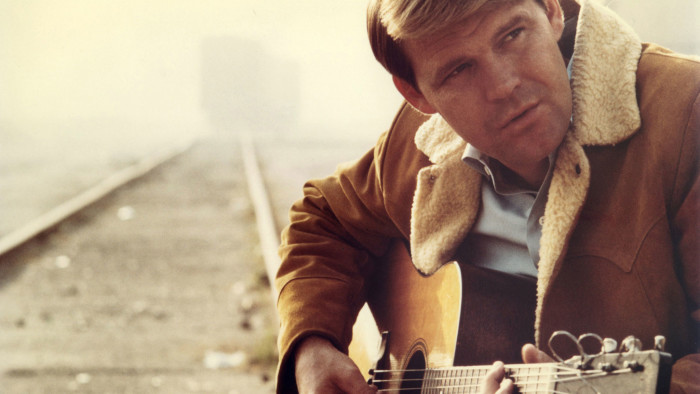The Life of a Song: By the Time I Get to Phoenix

Simply sign up to the Life & Arts myFT Digest -- delivered directly to your inbox.
Frank Sinatra called composer Jimmy Webb’s subtle, mournful ballad “By the Time I Get to Phoenix” the “greatest torch song ever written”. Yet when Webb, then a young writer for Motown, presented the tune’s three narrative verses to his bosses, they were puzzled: “Where’s the chorus?”
There was no chorus, although not for lack of Motown trying to wrestle one on to it. The song follows the narrator on a road trip to Oklahoma, as he marks out the miles imagining what “she” is doing as he drives far away from her, for good this time.
After kicking around fruitlessly at Motown, Webb’s song ended up with the singer/producer Johnny Rivers, who recorded it in 1966 on the album Changes, for his own label. Rivers, who still tours today, considered releasing “Phoenix” as a single but instead suggested it to a fellow producer who was working with a young singer/guitarist: Glen Campbell.
Campbell had had a couple of minor solo hits (although one of them, “Gentle on My Mind”, went on to win a Grammy), and had stepped in on tour with the Beach Boys after Brian Wilson’s breakdown. Campbell was part of the legendary Wrecking Crew, top LA session players working on such 1960s-defining hits as “He’s a Rebel” and “California Dreamin’”. He also possessed a faultless five-octave range. Giving the song to Campbell was an inspired suggestion. Within a month of Campbell recording “Phoenix” in 1967, the tune reached number 2 in the country charts and 26 in the pop charts. It became one of the most-covered songs of the 20th century, attracting artists from the Four Tops to Nick Cave and the Bad Seeds.
The song opened a partnership between Webb and Campbell that was to produce, among many, the pop country classics “Galveston” and “Wichita Lineman”. (Webb has been touring with a show called The Glen Campbell Years, a tribute to the singer who is now suffering from advanced dementia.)

Meanwhile some listeners cavilled at the timings ascribed to the “Phoenix” route, even producing maps to show how improbable they were. “Sometimes as a writer you come to a decision like that and you just flip a coin,” the composer responded in the 2011 book Chicken Soup for the Soul: Country Music. “You could try ‘By the Time I get to Flagstaff’, but does it work as well?”
Campbell’s sweet-tenored account of “Phoenix” came in at a radio-friendly less-than three minutes. But just two years later, a monumental 19-minute version emerged on an album from soul singer Isaac Hayes, then a house musician and writer at Memphis label Stax. Hot Buttered Soul became the first album to hit high in four charts: R&B, jazz, pop and easy listening, restoring Stax’s fortunes after the loss of its artist Otis Redding in a plane crash. Hayes audaciously opens with a then unheard-of 10-minute rap, inventing an intense back-story for the “Phoenix” couple. His sensual baritone delivers a cautionary tale for the uxorious: a husband working triple time to please a faithless woman who brags about his stupidity.
As his wronged protagonist packs his car, it’s 3:30 in the morning and Hayes is yet to go anywhere near the song’s melody. By the time he does, the length of the recording — there are only four tracks on the album — had overturned the formula of hit-singles-plus-filler that governed the industry’s treatment of black albums. Hayes’s million-selling refashioning of a country pop hit opened a radical space into which Marvin Gaye, Curtis Mayfield and others soon stepped.
Yet Hayes said that his rapped intro only came about when he found himself performing a first attempt at “Phoenix” in front of a chattering club audience. “I figured I’d better do something,” he told the writer Gerri Hirshey. “I knew they were going to think I was crazy to be doing a song by a white pop singer, so I figured I’d explain. And I started talking . . .”
For more in the series, and podcasts with clips of the songs, ft.com/life-of-a-song
Photograph: Getty Images
Comments